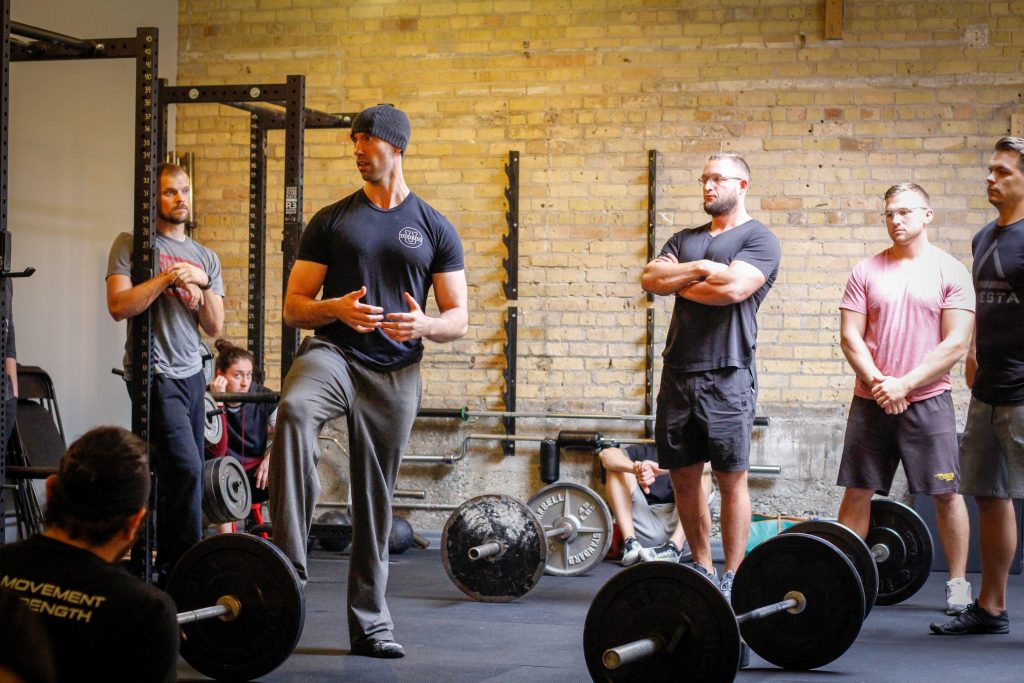Full Disclosure: The title of today’s post implies I’m going to be discussing strength training. Jokes on you….I’m actually going to share my top 10 Instagram pics of my cat.
KIDDING…the topic du jour is strength training.
I’m just not going too deep down the rabbit hole.
For that and if you really want to get into the nitty-gritty particulars of strength training and the mechanisms at play go check out Vladmir Zatsiorsky’s Science and Practice of Strength Training.
It’s a light read.[footnote]Said no one, ever.[/footnote]
There you can learn everything as it relates to the scientific facts, including but not limited to motor unit recruitment, rate coding, delated transmutation, and a multitude of other words and phrases that’ll undoubtedly get people strong and make you sound smart.
Admittedly, what follows isn’t all that scientific. However it is rooted in 15+ years of coaching experience working alongside thousands of athletes/clients. I believe these “tenets” work.
Besides, I have big biceps so I obviously know what I’m talking about.

The Unspoken Tenets of Strength Training
When it comes to the topic of strength training the internet likes to argue about optimal sets, reps, loading, periodization, low vs. high bar position, exercises to use, in what order, and anything and everything that may fall between the lines.
Pantless preacher curls for the win?
And, to be honest, many people can make a case for why they do this (compound lifts only) and why do that (one AMRAP set per muscle group with machines) and it’s likely they’re seeing results and increases in strength.
Who am I to judge?
That being said here are some additional, dare I say what should be commonsense thoughts for your consideration.
1) Make It a Priority
You’re busy, I’m busy, everyone’s busy.
Those people who get stronger are those who show up.
They make training a priority, not Netflix.[footnote]An exception can be made if there’s some “chill” involved.[/footnote]
Nothing so succinctly gets this point across than a quote I came across from Greg Robins:
“Every time someone asks me about a client, or friend, etc. who has made a lot of progress…”How did they get that strong?”…..”What did they do to get there?”…Consistency, is always the first thing out of my mouth. They were consistent.“
I find far too many trainees become paralyzed by too much analysis; too much pontificating and too little action.
Shut up, show up.
Do that, consistently…worry less about the particulars, and good things are bound to happen.
2) Boring Is What Works
I Tweeted this the other day and it seemed to resonate with people:
The training programs that tend to work best are often relentlessly monotonous. People rarely need as much “variety” as they think.
— Tony Gentilcore (@tonygentilcore1) November 3, 2017
I’m a bit biased and old-school and feel the best strength programs have their base in compound, barbell exercises.
Or the “Big 3” in bro-speak.
- Squat
- Bench Press
- Deadlift

We could also toss in barbell rows, chin-ups/pull-ups, RDLs, GoodMornings, overhead presses, etc.
However, prioritize the Big 3 and focus on doing more work over time with those and you won’t be weak.[footnote]Slight downside: you increase your chances of being all your friend’s “go to” when they’re moving.[/footnote]
People rarely need variety, they need to not have a 185 lb deadlift.
3) Technique/Positions Matter
I recently hit my first 600 lb deadlift. A month away from my 41st birthday, thank you very much.
I had someone ask me what is the difference between someone trying to improve from 500-600 lbs compared to 400-500 (or even 200-300 lbs)?
Easy…technique.
When someone is strong enough to pull 3x+ bodyweight it’s a safe bet their technique is on point.
When someone reaches the echelon of 700, 800, 900+ lbs…their technique has to be meticulous and razor sharp. By that point, however, more often that not, technique is pretty much on auto-pilot.
It’s like second nature and just happens.
I think why some people have a hard time, especially intermediate lifters who do have experience (and are kinda-sorta strong, but are trapped in “I’ve had the same PR for three years and I can’t seem to get over the hump purgatory”), is that they’re in poor positions.
More specifically they’re in poor positions and are unable to express their true strength.
A lot of people can “muscle” up a 300 lb, maybe even a 400 lb deadlift. They may shit out every single one of their vertebrae, but hey…they lock it out.
500 lbs? Meh, rarely.
600+ lbs? Hells to the no.
I’m a huge fan of using sub-maximal work (65-85% of 1-rep max) and keeping people accountable with their technique. Building volume with sub-maximal work ensures good positions (I.e., canister/pillar position, stacked joints) and also ensures technique will be solid.
The more “good” reps I can nudge out of people, the more likely is is they’ll start blasting through PR plateaus soon enough.
4) Utilize EDM Sets
Pigging back on the point above, another tactic I like to use is the concept of EDM (Estimated Daily Max) sets.
This takes into account how someone feels on any given day.
Some days weights fly up.
Other days, not so much.
Nothing is worse than showing up at the gym, having an epic workout planned, only to feel like a bag of dicks and everything feels heavy.
Well, explosive diarrhea sucks. But feeling like a bag of dicks is not to far behind.
As much of a fan as I am of percentage based training, something I’ve been utilizing more and more (especially with my older lifters) are EDM sets.[footnote] Quick shout out to strength coach Paul Carter who’s the person I stole this from.[/footnote]
Here’s an example:
Lets use the bench press.
I’ll have someone ramp up to his or her’s 3 EDM (3-rep Estimated Daily Max).
This won’t be a true rep-max remember, but a weight that’s challenging that day for 3-reps.

Ramp up sets are as follows:
95×8
135×5
185×3
205×3
225×3
250×3 <— 3 RM for the day.
I’ll then have them take the same weight (250 lbs) for some additional singles (3-5×1) to get a little more volume in.
Alternatively you can have someone work up to a 5-EDM and follow that with 2-3 additional sets of triples.
In both scenarios you ensure all reps are fast and that technique will be spotless. What’s more, you’re less likely to run someone into the ground and they’re more likely to recover and bounce back faster.
They still get some heavy(ish) work done, but with quality staying paramount.
5) Go To Bed
Go the fuck to bed, people.
You’ll only get as strong as how well you allow yourself to recover.



